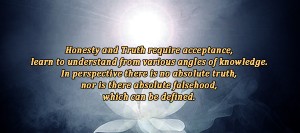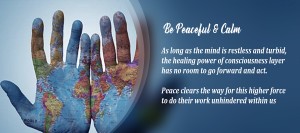To serve the less fortunate is the greatest form of worship of God. To repeat His name and constantly remember Him is the surest and quickest way to achieve success and attain eternal peace. To regulate one’s life according to the injunctions of the Shruti is the greatest cure of any malady. To meditate daily is the only way to soothe the nervous mind.
To idly waste time in extra-curricular activities is the greatest of all earthly sins and the worst form of liability. To wreck one’s faith in God is an untold mishap.
Life is a mysterious phenomenon, hence one needs to maintain a measure of great precaution to deal with it. The mysteries of life unfold to the person who regards it as the greatest of God’s gifts. Life no longer remains a magical box if one takes to sadhana sincerely. To those who have implicit faith in God, life becomes a happy celebration of festivities.
Simplicity is the scientific way of life. Service is the salt of life, Japa is the soap. Asanas purify the body and the name purifi es the mind. Dhyana strengthens willpower, work strengthens the future and study makes one perfect.
Life without devotion has no meaning at all. Peace does not come in the absence of faith in God, but is granted to those who have a refi ned culture, a keen sense of duty and faith in the good and in God. Peace be to them who are pure at heart, intensively courageous in action, serviceable to the low and fallen, and meditative before they take up any work.
Most of our aspirations are woven around our little family, business and personal whims. We do not take notice of the aspirations of others, especially of those who need to be noticed and are lying unnoticed. When you take care of others, God and nature will take care of your welfare. This law is historically tested and found correct. God helps those who help others. If you are ablaze with a fiery determination for helping others, you are going to be endowed with capacities.
It does not, however, mean that you should stage a drama of your ideals, but you should at least have a great ambition and burning aspiration to help others. It is not necessary that you should consider material and non-material help alone as a form of service. Sweet speech or sympathetic utterances are one of the aspects of service.
Religion means a proper sense of duty, which helps an individual to regain his lost glory and decipher the lost path. Dharma means a stable platform, which retains our essential values of life, our character, aspirations and ambitions. Since it upholds or keeps us firmly established in a settled position, it is called dharma. Since it calls us to return, it is called religion. Religion must have an integrated space and scope in our daily life. The religious code must excommunicate the parasites which are flourishing in the name of religion. Religion should be disentangled from so-called social ceremonies and buffoonery with impartial judgment. Under no condition should religion be taken to be the totality of templetarianism. Religion should form the fundamental basis of our attitude to motives, actions and emotions in day-to-day life. Thus every one of our motives, actions and emotions can be spiritualized in the fraction of a second without the least tinge of tamas and rajas.
The Sanskrit word for spiritual practice is sadhana. Sadhana means spiritual effort, not physical or mental effort. Spiritual effort or endeavour seems to be an act of opening the door to enlightenment. Enlightenment is the prime purpose of yoga. Out of the many practices, there is one method which has become popular throughout the world and is called the spontaneous awareness of consciousness.
As modern psychology puts it, the present of man is based on his past. What is your past? What do you know about it? Have you analyzed your mind, and if you want to, how can you do it?
As much as one is able to perceive objects outside, sounds, forms, taste, touch and smell, in the same way one should be able to see the train of thought of the subconscious, conscious and unconscious. There are levels of feeling and dimensions of emotion which one never knows, unless one is able to go to the bottom of the mind. The mind is not a thinking apparatus or a bundle of habits as it was thought of. The mind is a homogenous existence of awareness. The mind is like an ocean and one cannot say what is ocean, for the top is ocean, the bottom is ocean, every end is ocean. One cannot point out a particular part as ocean.
Likewise, one cannot say that thinking is the mind; one cannot say that feeling is the mind and one cannot say that intellect is the mind.
This homogenous fount of awareness, known as the mind in modern psychology, as chitta in yoga and Samkhya philosophy, and as chaitanya in Vedanta, is a secret and mystical stuff. It is not known, and a person who has known it has known life.
One of the reasons why we are miserable is that we are movable; I am unhappy, you are unhappy, most of us are unhappy not because there are reasons for unhappiness, but because we don’t know ourselves. In total ignorance of what we are, we are suffering. Therefore, the science of yoga which leads to self-knowledge and realization is a blessing and a boon for humankind, for it ends the continuous circle of suffering and ignorance.
Most of us are not happy not because there is a reason to be unhappy, but because we do not know ourselves. In total ignorance of what we are, we suffer. Therefore, the science of yoga that leads to knowledge and self-realization is a blessing and a gift to humankind, because it ends the ongoing cycle of suffering and ignorance.
The second problem of the mind is dissipation. The mind is never steady. It is restless by nature, like a monkey. When a monkey is stung by a scorpion, it becomes all the more restless so that even a whole bottle of champagne won’t quiet it – super-restlessness. This is the nature of the mind. It is always moving, never static. It is not able to hold itself still or fix itself at one point.
Even if I were to give you concentration by touching your forehead for a moment, afterward your mind would revolt again, because an activity is the natural formation and structure of the mind. The mind is made up of three substances or elements: sattwa, rajas and tamas; these are the three qualities of nature: equilibrium, activity and immobility respectively. These are the three eternal qualities of which the mind is composed.
Therefore, in order to create a state of spontaneous concentration, yoga should be practiced. According to the great gurus of the past, the mind spontaneously becomes one-pointed by the practice of yoga, in the form of kirtan, in the form of satsang, in the form of reading the lives of great saints. Without adding yoga as an element of your spiritual sadhana, dissipation of the mind cannot be stopped.
Other problem of the mind is ignorance or unawareness of the principles of consciousness, chit. There are true principles which we do not know because our parents did not teach them to us, and they did not teach us because they did not know themselves. Ignorance of the truth, the true principle of life, is called avidya. This veil of ignorance can be rent asunder by the practice of jnana yoga, the yoga of philosophical rationality.
Questions like, why am I doing all this? What for? What is this body? What is the mind? What is the spirit? How is all this related to time and space? What is time in relation to the mind? What happens when I go to sleep? Who is there? Who witnesses the sleep? What happens in dreams, and why do I dream? Who is the witness of the dream? Am I the same person who is waking, sleeping and dreaming? Or am I three different beings, three different personalities? If I am, then who dreams, who sleeps and who is awake now?
These and many other questions come into our minds and we have to come to a conclusion on the basis of the dictums of the great saints and philosophers. This is jnana yoga – I am a part of the cosmic nature. It is the first truth which we have to know, believe and keep in our minds. This body is not the ultimate substance. The awareness of time and space through this mind is a finite concept, not an infinite concept. Therefore, it is not absolute, and when it is not absolute, it cannot be truth. That which is truth must be absolute. This is jnana yoga.
In jnana yoga we come to the principle of truth, we know what it is, on the evidence of saints, revelations and the dictums of the great philosophers who said, ‘I am That.’ That becomes the guideline, Aham Brahmasmi, I am the cosmic light. The saints have said, “Realize your real nature,” which means that behind the shadow of the body and mind, behind passions and emotions, behind the ever-changing experiences, there is an eternal consciousness within us which has homogeneity at its root and which is just cosmic, without beginning and without end. The experience is an absolute experience which has no other dimension of experience.





